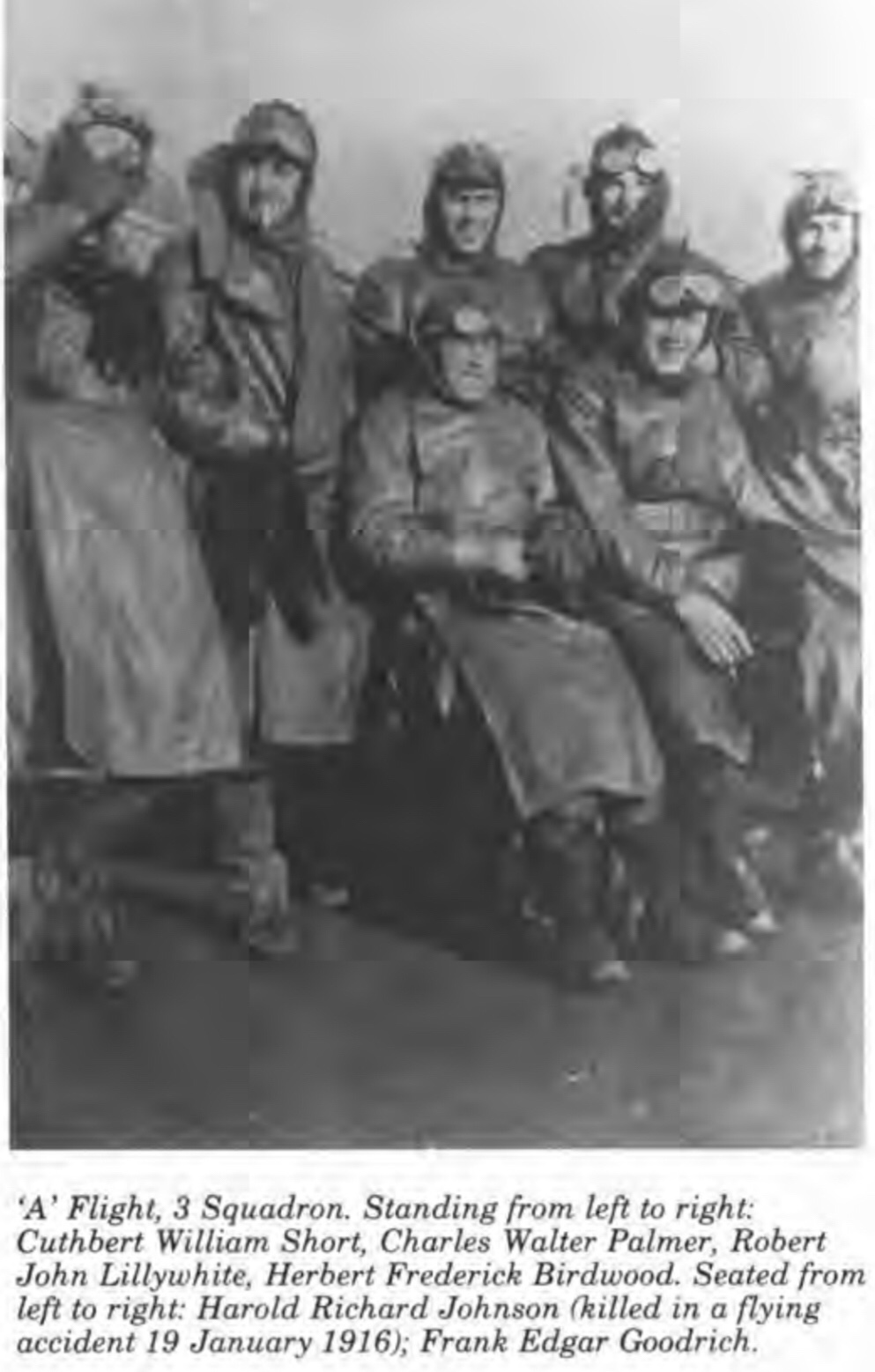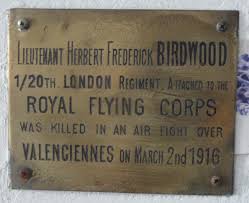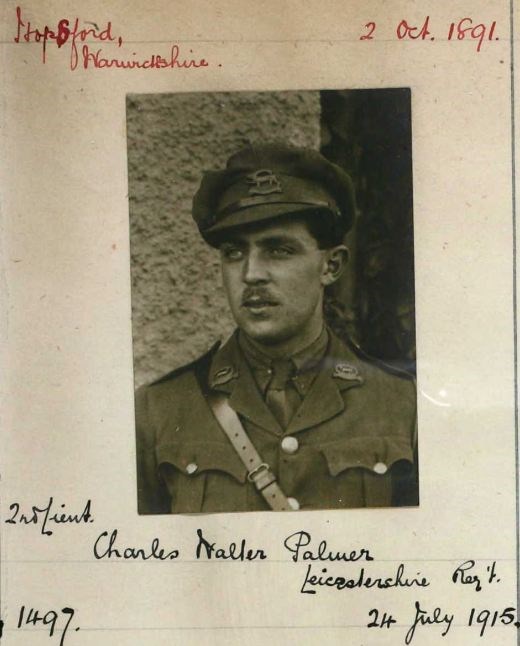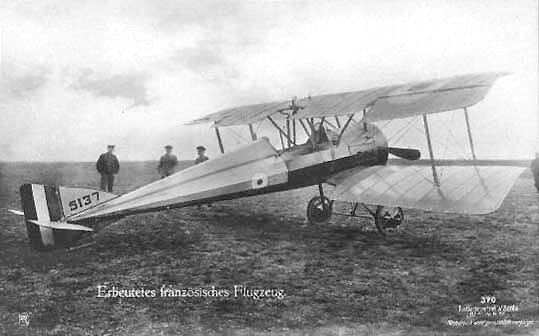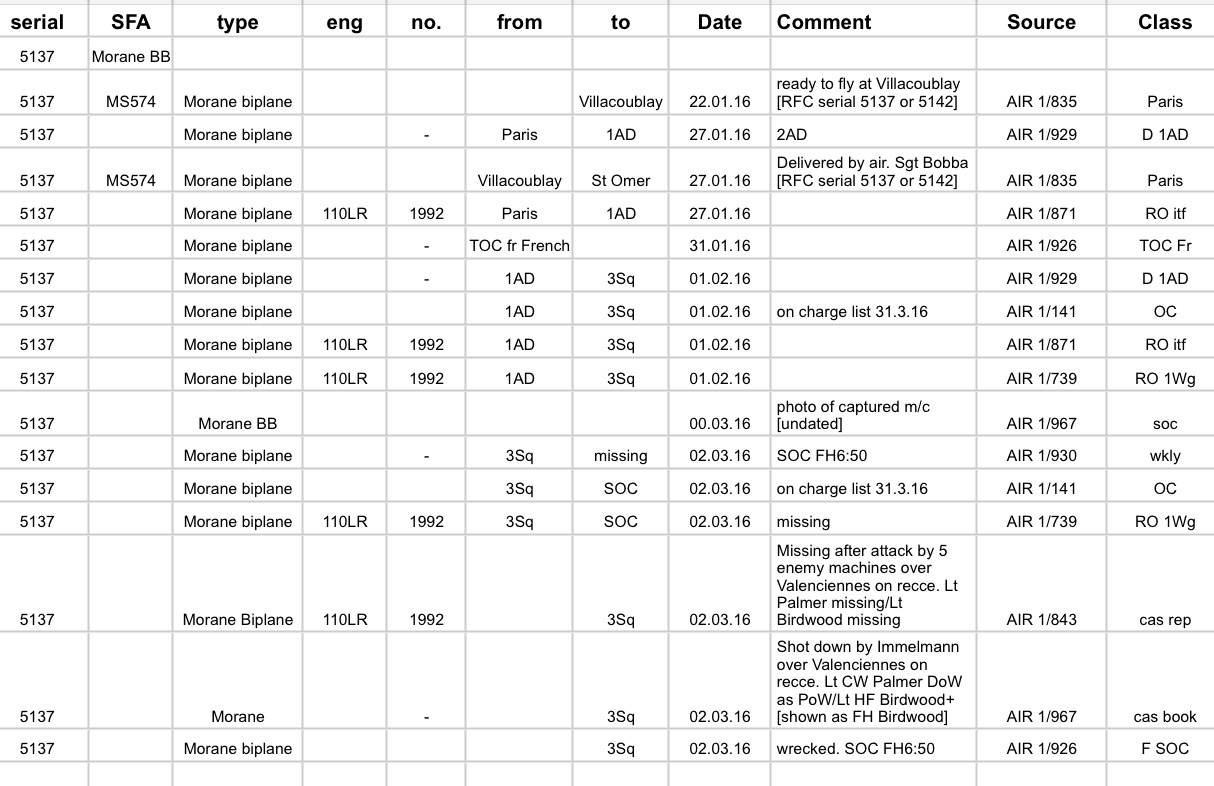Tone was appointed to a Commission as temporary Second Lieutenant and posted to the General List for duties with the Royal Flying Corps.





Tone was appointed to a Commission as temporary Second Lieutenant and posted to the General List for duties with the Royal Flying Corps.





Toné & Immelmann – Morane Scout 5067
On 2 March 1916, Charles Walter Palmer and Lt Herbert Frederick Birdwood were engaged on a long reconnaissance deep over the lines, in a Morane BB (5137). The route to be patrolled was Auchel-Douai-Valenciennes- Douai-Lille-Auchel. They were escorted by Sgt Tone H Bayetto, who was flying a Morane N (5067). Tone reports that when leaving Douai the patrol was attacked by one Fokker, which followed and as they arrived at Valenciennes another four Fokkers engaged them. Bayetto then shot a drum of tracer at the nearest aircraft which he reports as 'nose diving into woods near Valenciennes with the appearance of being on fire'. They were then archied and the fight broke up after five-ten minutes. Bayetto had then lost sight of the Morane BB and returned home via Lille where he reports being attacked by another three Fokker single seaters. Palmer and Birdwood were engaged and shot down on their return by Immelmann, who was based at the airfield of FFA-62 near Douai. Birdwood's gun had jammed (information in Palmer's last letter home) and they were unable to protect themselves from the attack. Birdwood died immediately from bullet wounds and Palmer was captured but later died on 29 March from blood poisoning following amputation of his foot on 17 March.
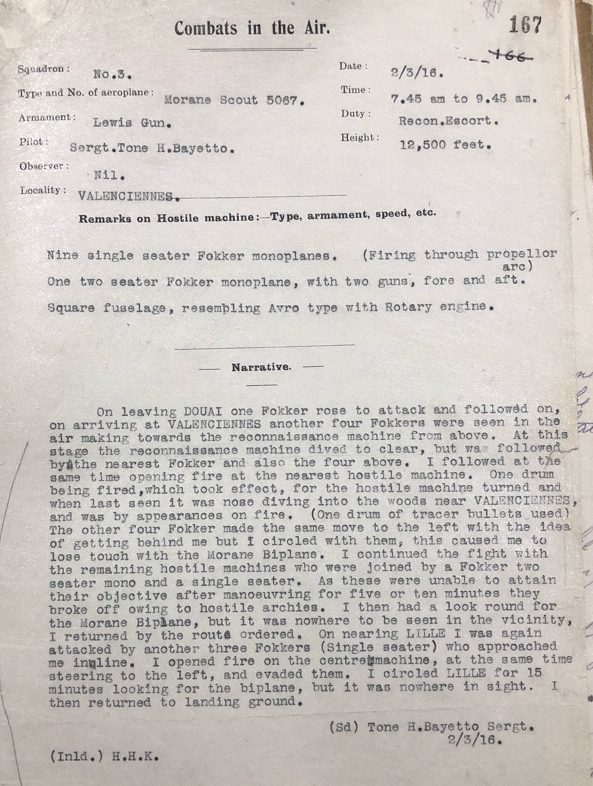
Royal Flying Corps Communiques 1915-16: "2 March Sgt Bayetto (Morane Scout, 3 Sqn) on escort duty to the Valenciennes reconnaissance reports having been attacked by five Fokkers in the neighbourhood of Valenciennes. The reconnaissance machine dived to get clear, but was closely followed by the hostile machines. Sgt Bayetto opened fire on the nearest hostile machine and drove it down, apparently into woods near Valenciennes. After this engagement he saw no more signs of the reconnaissance machine and returned over Lille where he was again attacked by three Fokkers. These he eventually evaded and after circling around Lille for 15 minutes, returned to his landing ground." [Christopher Cole, Royal Flying Corps Communiques 1915-16, (Donovan, 1990) ISBN 1-871085-03-9, p122]
The Hinckley and Bosworth Herald: “After a thrilling fight in mid air, Flight Lt Palmer, the brilliant Hinckley aviator has fallen into the hands of the Germans. He was piloting a machine on distant reconnaissance at the time, and engaged with Immelmann and other German aviators for fifteen minutes, his observer being killed and himself wounded.” [The Hinckley and Bosworth Herald, Saturday 25 March 1916].
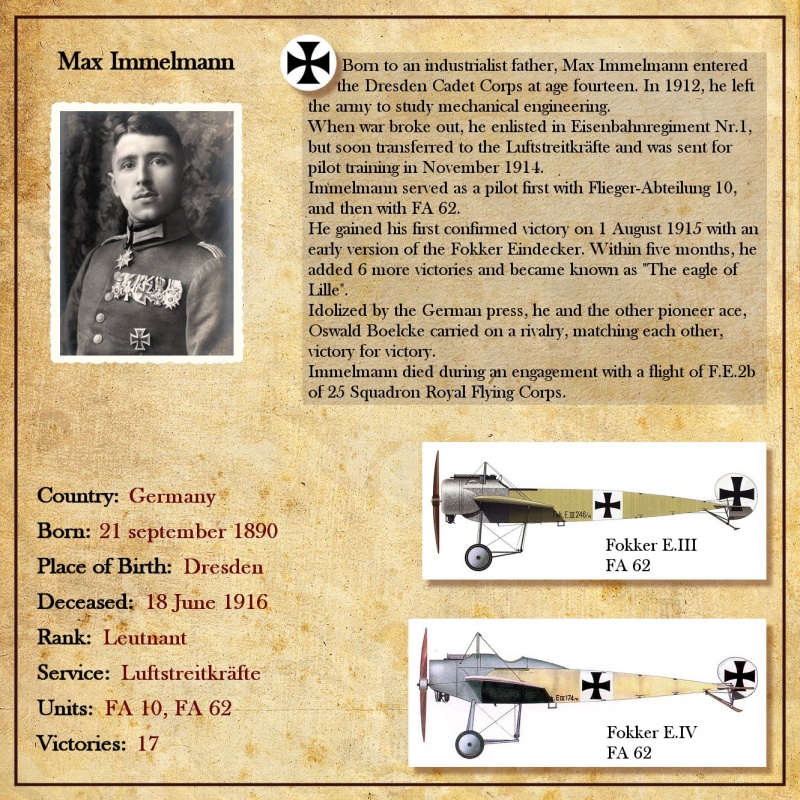
Immelmann: “At last some more arrived on March 2nd, I went up that day to take over the air barrage between Lens and Arras. I was about 2200 metres up when I suddenly saw an English biplane heading for me. It was about 2400 metres up, and close behind it, about 100 metres away, there was a monoplane. A Fokker I thought, and rejoiced at the idea that it was going to shoot the Englishman down. But it did not shoot. I took my glasses and saw (by the markings) that it was another Englishman. The next moment the two of them came down on me, firing as they dived. Being 200 metres below them I was defenceless. I escaped their onslaught by a nose-dive of 100 metres and flew a bit to westward while the Englishmen were flying east. Then I went into a swift turn, which brought me behind my opponents. They were 2200 metres up and I 2100. Then the pursuit began. The two of them were flying straight for Douai the distance between us increased continually. My engine was running badly. I thought it was most necessary to climb, but the Englishmen climbed as well. The two of them were up to about 3000 metres over Douai, and I was 2800. It was absolutely imperative for me to get higher if I meant to attack them, or to at least reach their height. I considered whether it would not be better for me to land, for I could do simply nothing with my engine. The two flew on towards Valenciennes, finally they looked only as big as flies. I got all the climb I could out of my engine; as there was no hope of overhauling them, I meant to cut them off on the way back. I succeeded in that and met the couple half way back from Valenciennes and Douai. I was now at 3200 metres up and they were 3100. Then the fun began. The English biplane led followed by the monoplane which had a device for shooting through the propeller that seemed similar to my own. I put my machine behind the monoplane and began to shoot. He on his part tried to get on to my neck. He planned to put himself behind me by means of a wide turn, and I used the moment to attack the biplane, keeping one eye on the monoplane, I shot at its companion everything I could get out of my gun. In this way I forced the biplane down to 2500 metres, whence it descended in a steep glide and landed. It was not advisable for me to turn on my other enemy, the monoplane after that, for firstly I could not make up the lost 500 metres of height with my bad engine and secondly I had a gun jam. So I let the monoplane buzz off in the direction of Lille and went home. News had already come through by telephone that an Englishman had landed at Souain [This not thought to be right and should be Somain ]. After receiving congratulations on all sides, I asked for a car. As chance would have it, Lt Claus, an old friend from the cadet corps, had come along to pay me a visit while I was still in the air. We drove off to the landing place together. The pilot (Lt Palmer) had been bandaged and was sitting in a car. He had a wound to his foot. On a stretcher close at hand was the body of the dead observer (Lt Birdwood). There were many bullet wounds in it. The machine had landed undamaged; it was dismantled and sent to our section. The machine carried two guns. The pilot used one of them to fire in front, just as I do, while the other was manned by the observer in the rear. The second machine gun was missing, it had fallen out of the dead observer’s hands and was found several kilometres away from the landing place. The Englishman said “Well, if I have been shot down, I am at least glad that Immelmann is my conqueror”. We then drove back, to the accompaniment of cheers from the assembled crowd. The machine was quite a new type, making its first flight at the front.” [From Immelmann, The eagle of Lille].
Some questions have been raised about Tone's account by John Grech in Immelmann's ninth victory, Cross & Cockade Int. 1995; 26(4):191-196.........
In Immelmann's account he makes no reference to any other Fokkers or of any one joining the fight.
Bayetto reports "I continued the fight with the remaining hostile machines who were joined by a Fokker two-seater mono and a single seater." This must be a mistake as there were no Fokker two-seater monoplanes, although there were odd occasions when passengers were carried in monoplanes.
Bayetto reports being in the air for two hours, yet J.M. Bruce in his volume 'The Aeroplanes of the Royal Flying Corps, Military Wing', (Putnam, 1992), ISBN 0-85177-854-2, p302, gives the endurance of the Morane N as one and a half hours.


